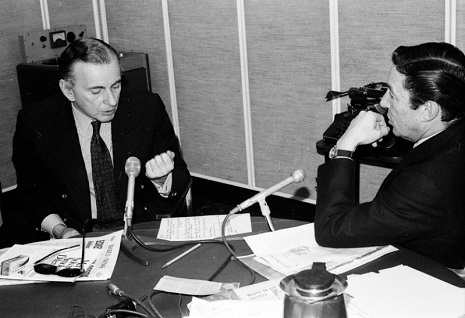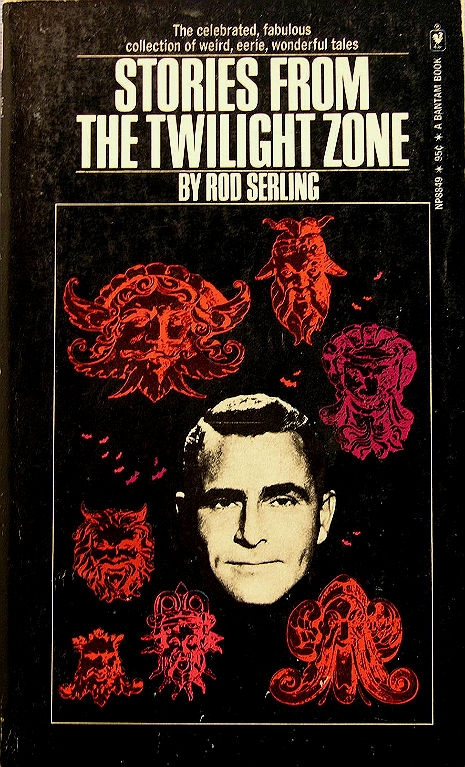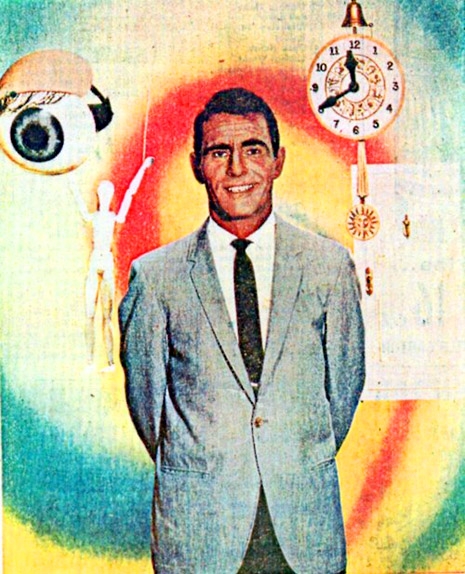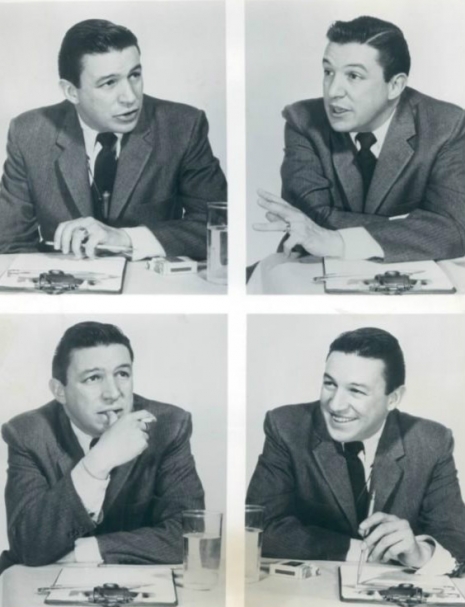
Gore Vidal and Mike Wallace 11 years later, in 1978. Vidal later resented television appearances, saying he was forced to do TV because no one read anymore.
1967 was an intense year for gay activism. In the UK, the the Sexual Offences Act of 1967 decriminalized gay sex for men over the age of 21 in England and Wales (No mention of lesbians?). In the US, however, only Illinois had revoked its sodomy laws That’s it. Illinois. Until the next decade it was just, “Hey, enjoy your one state! Hope you like the midwest, homos!” The 10th Amendment aside, gay activism was gaining more traction and publicity in the US, and this amazing little edition of CBS Reports—subtly titled “The Homosexuals”—was a pretty groundbreaking piece for gay men, despite its conservative conclusions.
Mike Wallace does a great job with the interviews. There’s a tragic one with an anonymous man on probation who had already been to jail three times for “committing homosexual acts.” Wallace says he’s “in therapy,” and the man identifies himself as “sick,” alluding to a domineering mother as the source of his sexuality. There’s a fantastic interview with Gore Vidal too, but my favorite is the representative from The Mattachine Society, an early gay rights group whose stated goals were:
1) Unify homosexuals isolated from their own kind
2) Educate homosexuals and heterosexuals toward an ethical homosexual culture paralleling the cultures of the Negro, Mexican and Jewish peoples
3) Lead the more socially conscious homosexual to provide leadership to the whole mass of social variants
4) Assist gays who are victimized daily as a result of oppression.
During an era where “identity politics” was just getting started, this was an incredibly sophisticated set of political objectives. The Mattachine Society had already been around since 1950, and the group’s original organizing principles were based on the Communist Party’s. Most the the original members were active communists, and founder Harry Hay actually recommended his own expulsion from the the party, which did not technically allow gay members. (They actually ended up dismissing him for security reasons, but declaring him a “Lifelong Friend of the People.”)
This little documentary really covers a range of self-acceptance, from the man who believed himself to be sick to the open and unashamed Vidal and the Mattachine members. Wallace however, makes his opinions clear, saying matter-of-factly:
The average homosexual, if there be such, is promiscuous. He is not interested or capable of a lasting relationship like that of a heterosexual marriage. His sex life, his love life, consists of a series of one-chance encounters at the clubs and bars he inhabits. And even on the streets of the city — the pick-up, the one night stand, these are characteristics of the homosexual relationship.








